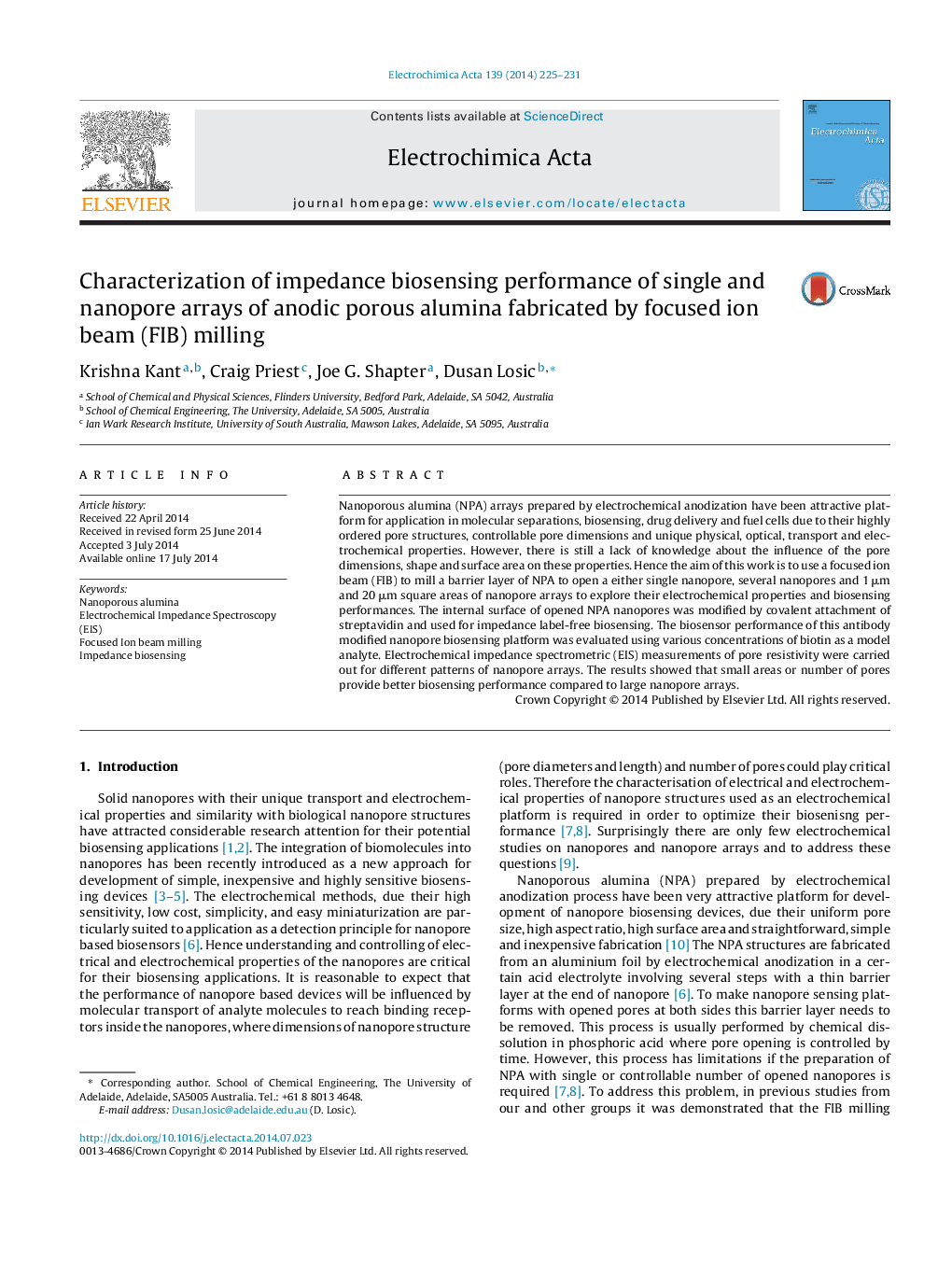| Article ID | Journal | Published Year | Pages | File Type |
|---|---|---|---|---|
| 185350 | Electrochimica Acta | 2014 | 7 Pages |
Nanoporous alumina (NPA) arrays prepared by electrochemical anodization have been attractive platform for application in molecular separations, biosensing, drug delivery and fuel cells due to their highly ordered pore structures, controllable pore dimensions and unique physical, optical, transport and electrochemical properties. However, there is still a lack of knowledge about the influence of the pore dimensions, shape and surface area on these properties. Hence the aim of this work is to use a focused ion beam (FIB) to mill a barrier layer of NPA to open a either single nanopore, several nanopores and 1 μm and 20 μm square areas of nanopore arrays to explore their electrochemical properties and biosensing performances. The internal surface of opened NPA nanopores was modified by covalent attachment of streptavidin and used for impedance label-free biosensing. The biosensor performance of this antibody modified nanopore biosensing platform was evaluated using various concentrations of biotin as a model analyte. Electrochemical impedance spectrometric (EIS) measurements of pore resistivity were carried out for different patterns of nanopore arrays. The results showed that small areas or number of pores provide better biosensing performance compared to large nanopore arrays.
Graphical abstractFigure optionsDownload full-size imageDownload as PowerPoint slide
